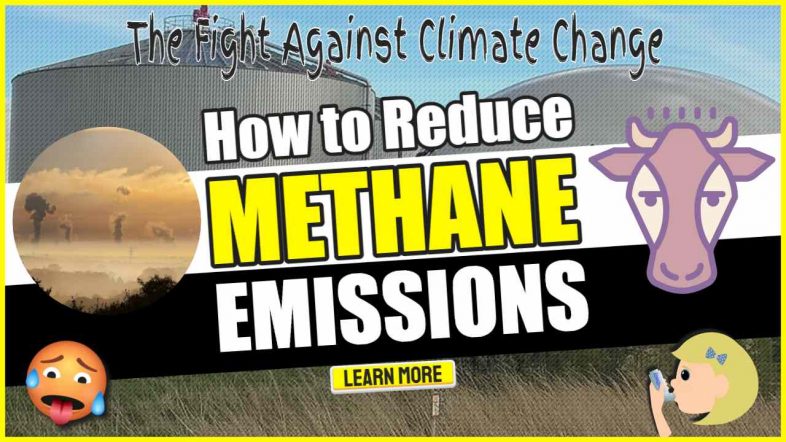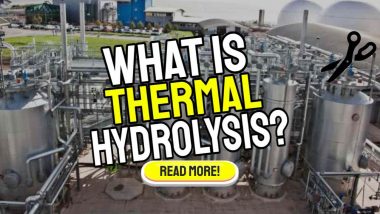The question of how to reduce methane emissions in agriculture is an important one. It is not fully appreciated that science shows that the ONLY way to meet global temperature rise targets is to drastically reduce agricultural methane emissions now. This can be done by using tried and tested agricultural and waste sector biogas technology. No new technology is needed. It can be done now.
Methane emissions abatement will have an appreciable effect on the all-important greenhouse gases which trap the sun's heat much quicker than carbon dioxide.
Introduction: Why Reducing Methane Emissions in Agriculture is Essential and How You Can Help
It's is only us that say that it is imperative that we all learn how to reduce methane emissions. It is those people in agriculture that need to do the most to reduce them.
The highly authoritative report titled: “Global Methane Assessment” (2021), by the Climate and Clean Air Coalition (CCAC), United Nations Environment Programme (UNEP) makes this clear.
According to the Global Methane Assessment, human-caused methane emissions can be reduced by up to 45% this decade. Such reductions would prevent nearly 0.3°C of global warming by 2045, keeping the Paris Climate Agreement's goal of limiting global temperature rise to 1.5 degrees Celsius (1.5 C) within reach.
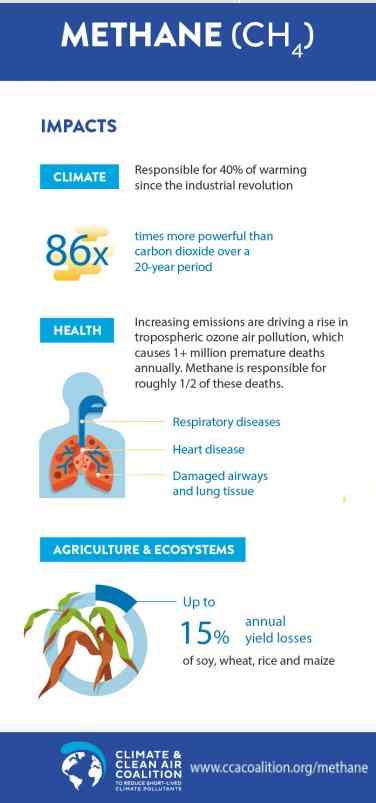 For the first time, the assessment considers the costs and benefits of methane mitigation in terms of climate and air pollution, because methane is:
For the first time, the assessment considers the costs and benefits of methane mitigation in terms of climate and air pollution, because methane is:
- a key component in the formation of ground-level ozone (smog),
- a powerful climate forcer and
- a dangerous air pollutant,
- a 45% reduction would prevent [by 2030]:
- 260,000 premature deaths each year,
- 775,000 asthma-related hospital visits each year,
- 73 billion hours of lost labour due to extreme heat each year, and
- 25 million tonnes of crop losses each year.
You can help by publicizing the benefits explained in this article, or by becoming a biogas plant owner!
How to Reduce Methane Emissions Gobally? What the United Nations Environment Programme Sponsored 2021 Report Concludes
A 1.5oC pathway will necessitate not only reversing the current rising trend in [temperature induced] methane emissions but also significantly reducing anthropogenic (man-made) methane emissions by 2030.
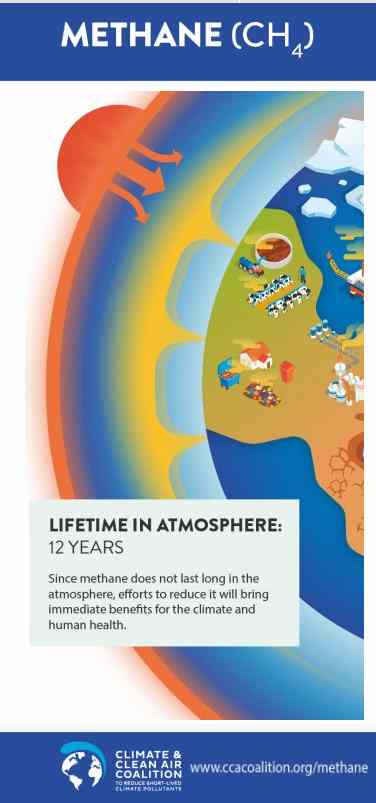 This could be accomplished through policies aimed at implementing specific controls in specific sectors.
This could be accomplished through policies aimed at implementing specific controls in specific sectors.
Governments and industry organisations must implement policies to effect behavioural change if the outcome we all need in reduced global temperature rise is to be accomplished.
This will necessitate policies that result in broad, cross-sectoral emissions reductions, such as ambitious international agreements, such as:
- the Kigali Amendments pattern for reducing hydrofluorocarbon emissions [under which global agreements have been very successful in abating and restoring the ozone layer],
- imposition of emissions caps or taxes, as shown in the modelling presented in Section 4.3 of the “Global Methane Assessment” 2021 report, or a combination of such policies.
[A “carbon tax” levied on all forms of atmospheric carbon emissions is often suggested.]
Gender-responsive policies, particularly those promoting behavioural change, should be implemented.
Achieving methane reductions also necessitates:
- increased education and information about the economic and societal impacts of mitigation, which their Global Methane Assessment” 2021, aims to provide, as well as
- additional infrastructure to make use of reduced emissions in some sectors and
- a shift in economic incentives that [if misunderstood] may be misaligned, preventing even action with overall negative costs from being undertaken (See IEA 2020 report).
It is also worth noting that, due to the removal of co-emitted aerosols that come with a realistically paced phase-out of fossil fuels, even aggressive decarbonization will have very little net impact on near-term (first 20 years) temperatures. Shindell and Smith (2019).
The research which has already been done has shown that the only plausible way to reduce warming relative to the reference case over the next 20 years is to reduce greenhouse gases from non-fossil sources:
- such as methane and nitrous oxide from agriculture and waste,
- as well as fluorinated gases (Shindell and Smith 2019).
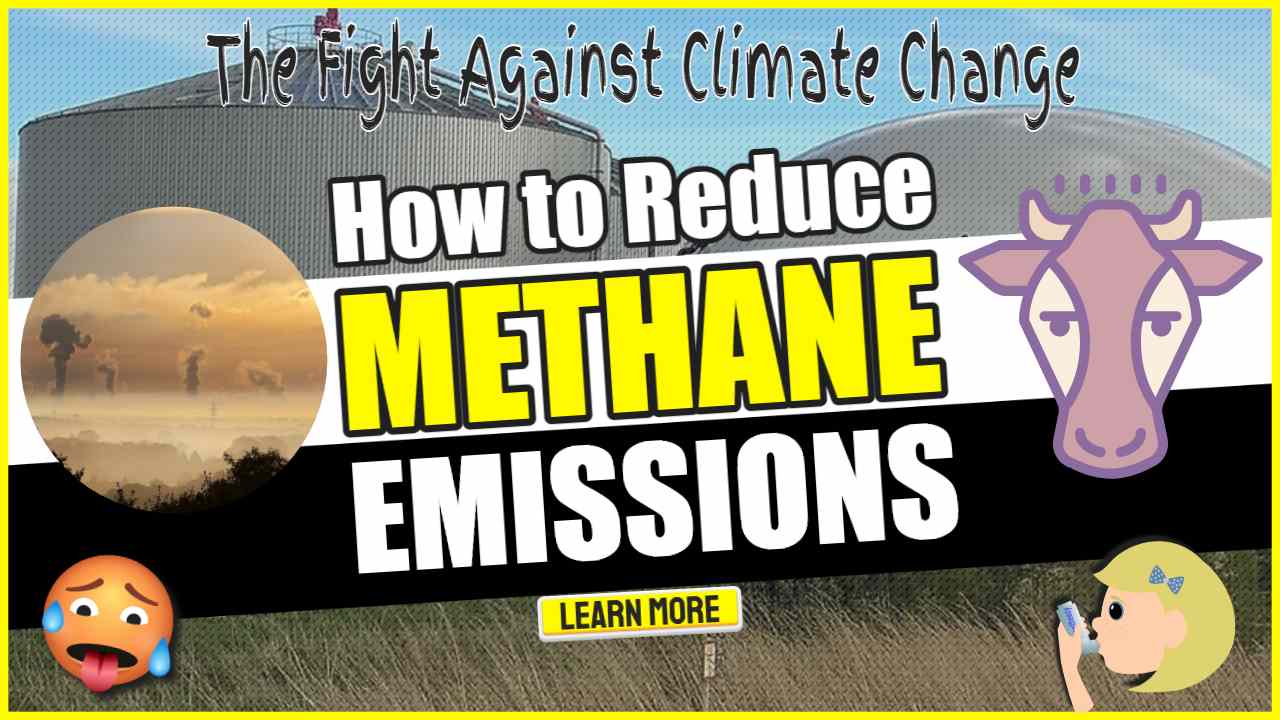
How to Reduce Methane Emissions from Agriculture and Waste
 Reducing Methane Emissions from the Agriculture and Waste Sectors is identified alongside further fluorinated gas emissions as a major policy area that can make a difference according to the “Global Methane Assessment” 2021 report.
Reducing Methane Emissions from the Agriculture and Waste Sectors is identified alongside further fluorinated gas emissions as a major policy area that can make a difference according to the “Global Methane Assessment” 2021 report.
While both human and natural sources are causes of methane emissions, recent increases are mainly driven by human activities. These are derived from three industries (in round figures):
- fossil fuels (35%),
- waste (20%), and
- agriculture (40%).
By adding the contribution from waste and agriculture and processing in anaerobic digestion facilities would abate a whopping 60% of the total methane emissions.
How to Reduce Methane Emissions in Agriculture
Abating Methane Emissions Can Only be Achieved Using Anaerobic Digestion and Biogas Technologies
According to the “Global Methane Assessment” 2021 report, “behavioural changes” have the potential to significantly augment targeted methane controls. They say that these are especially important in the agricultural sector, where targeted interventions have the least relative impact.
In our opinion, this refers to the agricultural and waste management sectors developing the only technology which can achieve methane emissions reduction on a large scale by developing and operating anaerobic digestion plants.
Using the biogas to carry out the digestion of these materials which, if left to current practices decomposes largely anaerobically by default in manure and slurry lagoons.
If not sent to a biogas digester it is often tipped in landfills in which at best no more than 50% methane collection can be achieved even applying best practices in landfill gas management.
The analysis (“Global Methane Assessment” 2021) suggests that reducing methane emissions will require:
- Behavioural changes, [in which the whole concept of waste is overturned to look at waste as a resource in a circular economy that re-uses it's organic materials by-products such as inedible food by anaerobic digestion (AD) and biogas production.]
- Reducing all food loss and waste [at source].
- Improving livestock management [to capture waste outputs in all forms and make use of them].
- Moving all populations to healthier diets that at the global level include reduced consumption of ruminant-based foods. This action has the potential to provide up to 65–80 Mt/yr of additional methane emissions mitigation.
Of the above 1. and 3. fall within the remit of the agricultural and waste (circular economy) sectors and the use of AD and biogas.
“Though these face substantial structural barriers, widespread adoption of such measures alongside targeted controls could bring anthropogenic methane emissions in line with those in 1.5ºC scenarios.”
(“Global Methane Assessment” 2021)
How Much Will Reducing Methane Emissions Cost?
We quote the closing sentence of the conclusion of the “Global Methane Assessment” 2021 report, as follows:
“Results are relatively robust for the fossil fuel and waste sectors and indicate clearly that there is an enormous potential for methane emissions mitigation with benefits that greatly outweigh implementation costs.”
The following is our original article we posted on this subject back in 2014:
How to Reduce Methane Emissions? – By Our Support of Agricultural Biogas Says Obama
(April 2014) In a very welcome move, the White House has backed farm biogas production from manure and other feedstocks since Obama was the US President, apart from a hiatus during Trumps term.
The reason for governments supporting biogas production is that less methane will be leaked into the atmosphere.
I primary methane emission source is the huge slurry lagoons on large US dairy farms. They are anaerobic and they produce methane in large quantities, especially during summer, and the methane bubbles off straight into the atmosphere.
Measures to reduce farm methane emissions simply by covering the lagoons in a plastic membrane, and collecting and using the biogas in a gas engine to make electricity, will reduce US national methane emissions. These are implicated in climate change studies as a significant contributory source of global warming.

The US dairy industry not only came to this conclusion in 2009 but has been working since toward its own carbon footprint reduction targets ever since.
It only took a politician (Obama) 5 years to wake up to a “good thing” for the environment when he must have realised that by making this announcement he could take credit for it!
The news, which shows that the White House after 12 months of extreme weather conditions which by themselves have convinced an ever-increasing number of Americans that climate change not only exists, but it is already having a major impact on their lives.
In the summer of 2021, there was a flurry of reporting on this topic, and a biogas roadmap was published. We have included some quotes to give a flavour of America's awakening to methane emissions below:
Dairy industry supports White House strategy to reduce methane emissions
In its announcement, the White House formally cited the work of the Innovation Center for U.S. Dairy’s Sustainability Council, whose efforts in part include a partnership with the USDA to proactively reduce agricultural greenhouse gas emissions, including methane.
“This announcement validates the path the dairy industry is on – one focused on proactive incentives that can increase farm income, not punitive regulations that would add more costs,” said Jim Mulhern, president and chief executive officer of the National Milk Producers Federation.
“Because of our recent efforts and farmers’ long-standing environmental stewardship, the White House strategy for agriculture includes a commitment to cost-effective, voluntary actions to reduce methane emissions through partnerships and programs.
Eager For A Climate Change Win, Obama Picks A Fresh Target: Methane – Forbes
In agriculture, belching, flatulent cattle are a focus. In June, the Unites States Department of Agriculture (USDA), EPA, and DOE will release a “biogas roadmap.” It will outline voluntary strategies (from the ranchers, not the cows) to speed up the …
Of course, when it comes to food waste the most environmentally beneficial way to reduce methane emissions is not to produce waste food in the first place, and it is to Newsweek's credit that their article recognizes this:
ᔥ Fixing Farming Without Breaking Food
Newsweek
Also with livestock, farmers could convert methane-laden manure into greener materials, such as compost or even electricity-yielding biogas. Consumers, on the other hand, can accomplish a lot simply by eating more responsibly. Almost half of the food …
Healthier, more efficient food systems could slash farm emissions – study Credits: Fixing Farming Without Breaking Food – Newsweek
Interestingly, commentators in the UK saw things in a slightly different light in the following article:
US government searching for “cow of the future” to save the environment
Telegraph.co.uk – One such example is the National Biogas Roadmap, announced by President Barack Obama, late last month, which will help install biogas digesters in slaughterhouses, dairies, and ranches that will capture methane gas released by the cows' manure …
A US government climate initiative is to address the largest source of methane gas in the country: agriculture and specifically cows. The Obama administration's crackdown on methane emissions has given fresh impetus to the development of an environmentally friendly “cow of the future.”
There are currently 88 million cattle in the United States, and
together their farts, burps and manure produce more methane gas than landfill sites, natural gas leaks or even fracking.
Methane, which has 20 times the global warming effect of carbon dioxide, accounts for 9 per cent of US greenhouse gas emissions, according to White House estimates. A typical animal emits 250-300 litres of methane a day.
Solutions being explored range from anti-methane pills and dietary supplements to burp scanners and gas backpacks.
Our Take on How to Reduce Methane Emissions in Agriculture
There we go again!. Trust us to be the ones that spotted the potential for an article which talks about farts, and burps in the debate about how to Reduce Methane Emissions!
However, it does remind us that only part of the methane emissions generated by the dairy industry (.ie. that from the manure) can be used productively by installing anaerobic digestion plants.
We would be interested in your views – please comment.
Is the US government really interested in reducing methane emissions and helping farmers to do that, or is this just lip-service to looking environmentally aware in order to get votes?
[End of article first published in April 2014. Updated July 2021 and September 2024.]

